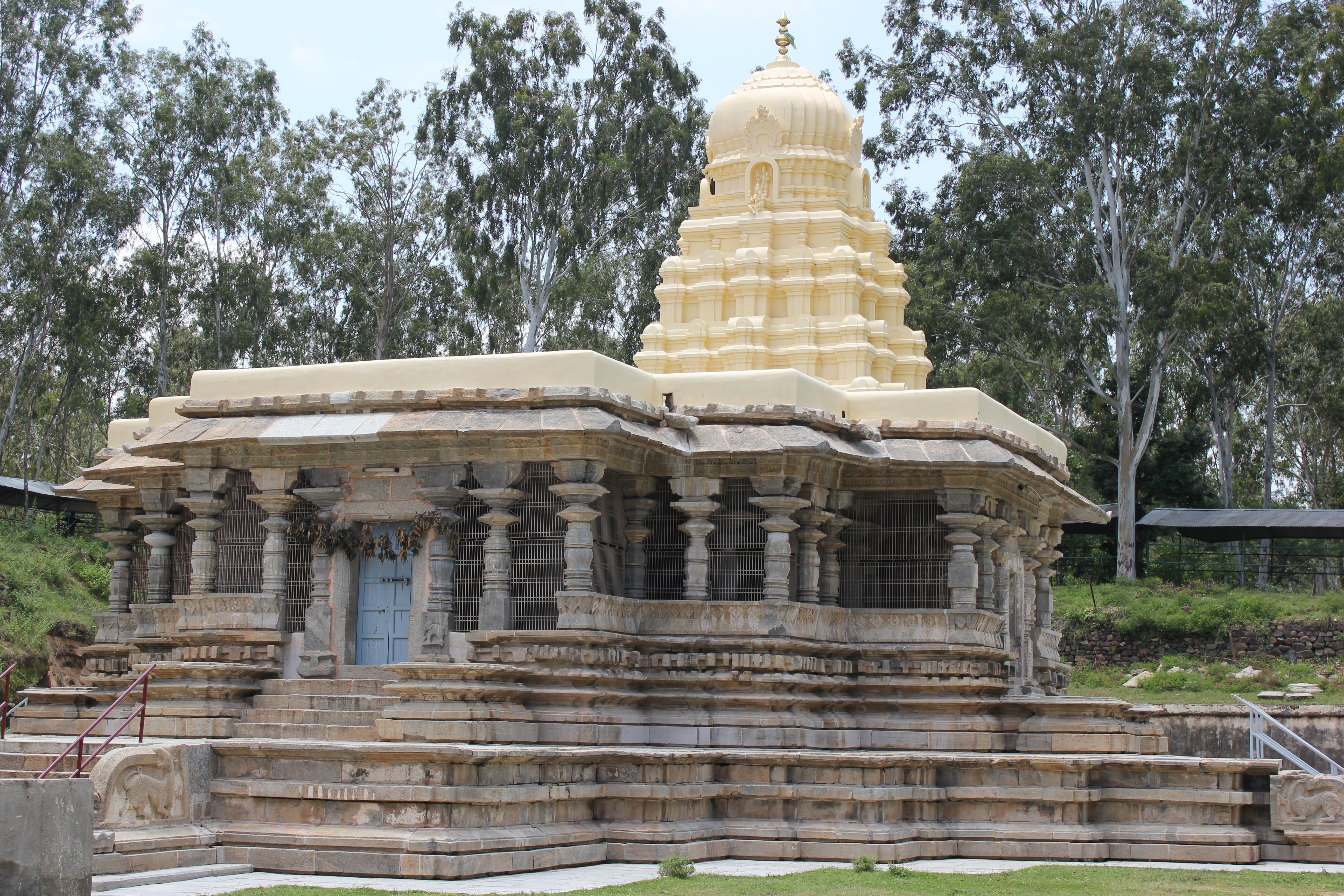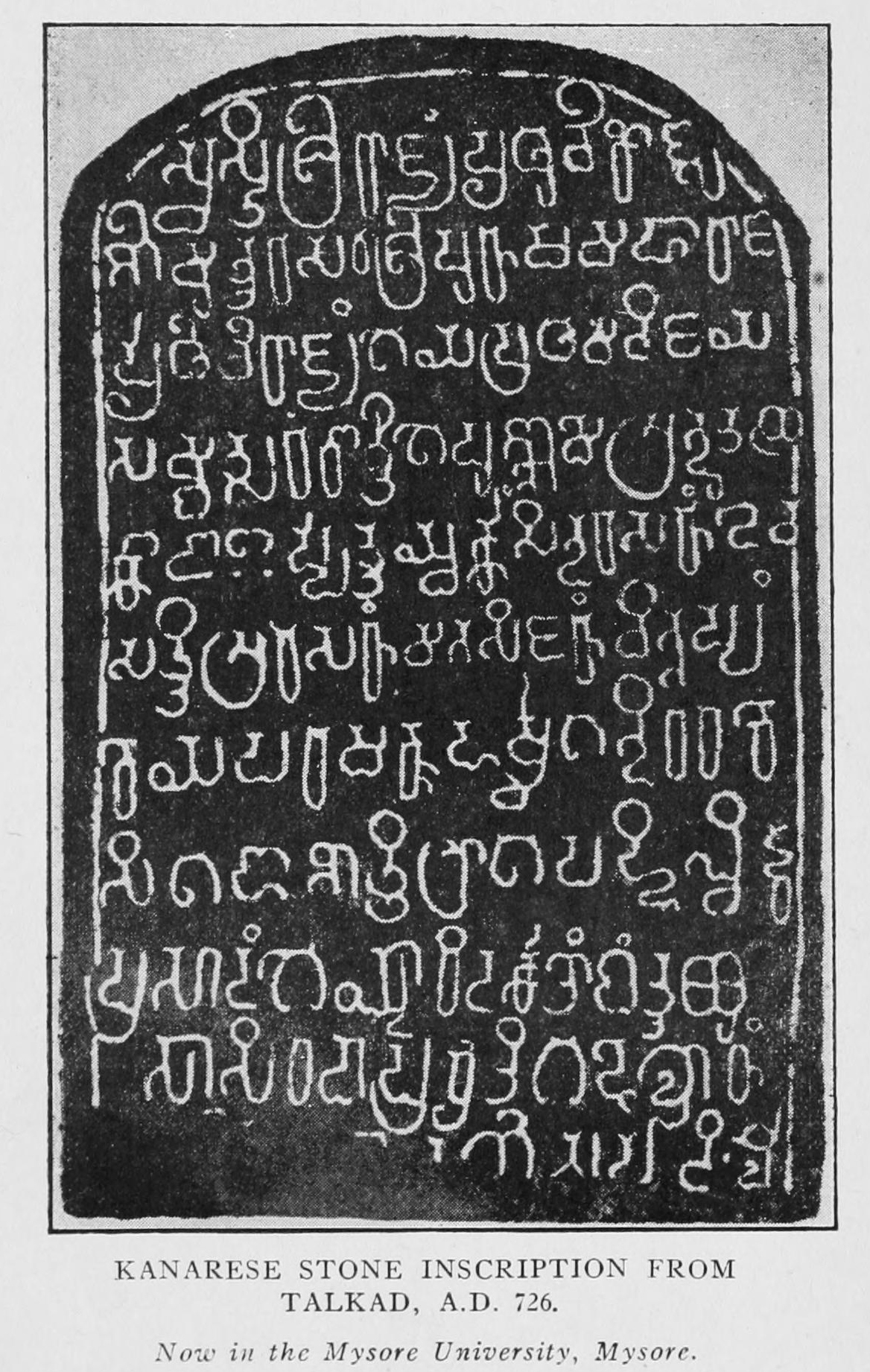|
Talakadu
Talakādu is a town on the left bank of the Kaveri river 45 km (28 miles) from Mysore and 133 km (82 miles) from Bangalore in Karnataka, India. Latinizations of the towns name vary, but include Talkād, Talakadu, Talakkadu, or Thalakadu. It had over 30 temples, most of which now lay buried in sand. The extant group of temples, where the eastward flowing Kāveri river changes course as the sand on its banks spreads over a wide area, is a popular pilgrimage site for Hindus. The origin of the town is lost in antiquity, but one tradition is that its name was derived from two Kirāta twin brothers, Tala and Kādu. The brothers cut down a tree after seeing wild elephants worship it and discovered it contained an image of Shiva and that the elephants were ''rishis'' transformed. The tree being miraculously restored, all obtained '' mōksha'' and the place was named Tala-kādu, which was translated into Sanskrit as Dala-vana. Two stone images declared to represent the broth ... [...More Info...] [...Related Items...] OR: [Wikipedia] [Google] [Baidu] |
Group Of Temples At Talakad, Karnataka
The Group of temples at Talakadu, located about 45 km south-east of the culturally important city of Mysore in the Karnataka state of India are ancient Hindu temples built by multiple South Indian dynasties. Archaeological excavations of the sand dunes at Talakad (or Talakadu) have shown the existence of several ruined temples built during the rule of the Western Ganga dynasty (c.345-999). However, according to historian I. K. Sarma, only two temples, the Pataleshvara (also spelt Patalesvara) and Maraleshvara (also spelt Maralesvara), built during the reign of King Rachamalla Satyavakya IV (r.975-986) are intact.Sarma (1992), pp111-113 According to the Archaeological Survey of India (ASI), the Vaidyeshvara temple (also spelt Vaidyesvara), the largest, the most intact and ornate of the group bears Western Ganga dynasty, Ganga-Chola dynasty, Chola-Hoysala architecture, Hoysala architectural features. Its consecration is assignable to the 10th century with improvements made up ... [...More Info...] [...Related Items...] OR: [Wikipedia] [Google] [Baidu] |
Hoysala Empire
The Hoysala Kingdom was a kingdom originating from the Indian subcontinent that ruled most of what is now Karnataka, India, Karnataka, parts of Tamilnadu and South-Western Telangana between the 11th and the 14th centuries Common Era, CE. The capital of the Hoysalas was initially located at Belur, Karnataka, Belur, but was later moved to Halebidu. The Hoysala rulers were originally from Malenadu, an elevated region in the Western Ghats. In the 12th century, taking advantage of the internecine warfare between the Western Chalukya Empire and Kalachuris of Kalyani, the Hoysalas annexed areas of present-day Karnataka and the fertile areas north of the Kaveri delta in present-day Tamil Nadu. By the 13th century, they governed most of Karnataka, north-western Tamil Nadu and parts of western Andhra Pradesh in the Deccan Plateau (Now Telangana). The Hoysala era was an important period in the development of South Indian art, architecture, and religion. The Kingdom is remembered today pr ... [...More Info...] [...Related Items...] OR: [Wikipedia] [Google] [Baidu] |
Vishnuvardhana
Vishnuvardhana () was a king of the Hoysala Empire in what is today the state of Karnataka, India. He ascended the Hoysala throne after the death of his elder brother Veera Ballala I in 1108. Originally a follower of Jainism and known as Bitti Deva, he came under the influence of the Hindu philosopher Ramanuja, converted to Hindu Vaishnavism and took the name "Vishnuvardhana". His queen Shanthala however remained a Jain. This was the transition period from Jainism to Hinduism. Vishnuvardhana took the first steps in creating an independent Hoysala Empire in South India through a series of battles against his overlord, the Western Chalukya King Vikramaditya VI, and the Chola Empire to the south. He recovered parts of Gangavadi province (modern southern Karnataka) from the hegemony of the Cholas in the battle of Talakad, and parts of Nolambavdi. According to historian Coelho, the Hoysalas gained the dignity of a kingdom due to the efforts of Vishnuvardhana, whose rule was ... [...More Info...] [...Related Items...] OR: [Wikipedia] [Google] [Baidu] |
Western Gangas
Western Ganga was an important ruling dynasty of ancient Karnataka in India which lasted from about 350 to 999 CE. They are known as "Western Gangas" to distinguish them from the Eastern Gangas who in later centuries ruled over Kalinga (modern Odisha and Northern Andhra Pradesh). The general belief is that the Western Gangas began their rule during a time when multiple native clans asserted their freedom due to the weakening of the Pallava empire in South India, a geo-political event sometimes attributed to the southern conquests of Samudra Gupta. The Western Ganga sovereignty lasted from about 350 to 550 CE, initially ruling from Kolar and later, moving their capital to Talakadu on the banks of the Kaveri River in modern Mysore district. After the rise of the imperial Chalukyas of Badami, the Gangas accepted Chalukya overlordship and fought for the cause of their overlords against the Pallavas of Kanchi. The Chalukyas were replaced by the Rashtrakutas of Manyakheta ... [...More Info...] [...Related Items...] OR: [Wikipedia] [Google] [Baidu] |
Western Ganga Dynasty
Western Ganga was an important ruling dynasty of ancient Karnataka in India which lasted from about 350 to 999 CE. They are known as "Western Gangas" to distinguish them from the Eastern Ganga Dynasty, Eastern Gangas who in later centuries ruled over Kalinga (historical region), Kalinga (modern Odisha and Northern Andhra Pradesh). The general belief is that the Western Gangas began their rule during a time when multiple native clans asserted their freedom due to the weakening of the Pallava empire in South India, a geo-political event sometimes attributed to the southern conquests of Samudra Gupta. The Western Ganga sovereignty lasted from about 350 to 550 CE, initially ruling from Kolar, Karnataka, Kolar and later, moving their capital to Talakadu on the banks of the Kaveri River in modern Mysore district. After the rise of the imperial Chalukya dynasty, Chalukyas of Badami, the Gangas accepted Chalukya overlordship and fought for the cause of their overlords against the Pal ... [...More Info...] [...Related Items...] OR: [Wikipedia] [Google] [Baidu] |
States And Territories Of India
India is a federalism, federal union comprising 28 federated state, states and 8 union territory, union territories, for a total of 36 subnational entities. The states and union territories are further subdivided into 800 List of districts in India, districts and smaller administrative divisions of India, administrative divisions by the respective subnational government. The states of India are self-governing administrative divisions, each having a State governments of India, state government. The governing powers of the states are shared between the state government and the Government of India, union government. On the other hand, the union territories are directly governed by the union government. History 1876–1919 The British Raj was a very complex political entity consisting of various imperial divisions and states and territories of varying autonomy. At the time of its establishment in 1876, it was made up of 584 princely state, constituent states and the prov ... [...More Info...] [...Related Items...] OR: [Wikipedia] [Google] [Baidu] |
Moksha
''Moksha'' (; , '), also called ''vimoksha'', ''vimukti'', and ''mukti'', is a term in Jainism, Buddhism, Hinduism, and Sikhism for various forms of emancipation, liberation, '' nirvana'', or release. In its soteriological and eschatological senses, it refers to freedom from '' saṃsāra'', the cycle of death and rebirth. In its epistemological and psychological senses, ''moksha'' is freedom from ignorance: self-realization, self-actualization and self-knowledge. In Hindu traditions, ''moksha'' is a central concept and the utmost aim of human life; the other three aims are ''dharma'' (virtuous, proper, moral life), '' artha'' (material prosperity, income security, means of life), and '' kama'' (pleasure, sensuality, emotional fulfillment). Together, these four concepts are called Puruṣārtha in Hinduism. In some schools of Indian religions, ''moksha'' is considered equivalent to and used interchangeably with other terms such as ''vimoksha'', ''vimukti'', '' kaivalya'' ... [...More Info...] [...Related Items...] OR: [Wikipedia] [Google] [Baidu] |
Matha
A ''matha'' (; , ), also written as ''math'', ''muth'', ''mutth'', ''mutt'', or ''mut'', is a Sanskrit word that means 'institute or college', and it also refers to a monastery in Hinduism.Matha Encyclopædia Britannica Online 2009 An alternative term for such a monastery is ''adheenam''. The earliest epigraphical evidence for ''mathas'' related to Hindu-temples comes from the 7th to 10th century CE. The most famous Advaita Vedanta ''mathas'' or ''peethams'', which came to be affiliated with the Advaita tradition in the 14th century, are Govardhanmaṭha Pīṭhaṃ at |
Chola Dynasty
The Chola dynasty () was a Tamil dynasty originating from Southern India. At its height, it ruled over the Chola Empire, an expansive maritime empire. The earliest datable references to the Chola are from inscriptions dated to the 3rd century BCE during the reign of Ashoka of the Maurya Empire. The Chola empire was at its peak and achieved imperialism under the Medieval Cholas in the mid-9th century CE. As one of the Three Crowned Kings of Tamilakam, along with the Chera and Pandya, the dynasty continued to govern over varying territories until the 13th century CE. The heartland of the Cholas was the fertile valley of the Kaveri River. They ruled a significantly larger area at the height of their power from the latter half of the 9th century till the beginning of the 13th century. They unified peninsular India south of the Tungabhadra River and held the territory as one state for three centuries between 907 and 1215 CE. K. A. Nilakanta Sastri, ''A History of South In ... [...More Info...] [...Related Items...] OR: [Wikipedia] [Google] [Baidu] |
Bhavani River
The Bhavani is an interstate Indian river which flows through Indian states of Kerala and Tamil Nadu, India. It originates from the Western Ghats and is one among the three rivers of Kerala which flows in eastward direction. Hydrography Bhavani river originates from Nilgiri hills of the Western Ghats, enters the Silent Valley National Park in Kerala and flows back towards Tamil Nadu. The Bhavani is a long perennial river fed mostly by the southwest monsoon and supplemented by the northeast monsoon. Its watershed drains an area of spread over Tamil Nadu (87%), Kerala (9%) and Karnataka (4%). The main river courses majorly through Coimbatore district and Erode district in Tamil Nadu. About 90 percent of the river's water is used for agriculture irrigation. The Bhavani River is one of the main tributaries of the Cauvery River. It travels for and joins the Cauvery from the right bank. The river joins the Cauvery at the Kooduthurai holy site near Bhavani. Tributaries Twelve ... [...More Info...] [...Related Items...] OR: [Wikipedia] [Google] [Baidu] |
Moyar River
The Moyar River (also Mayar) is one of the tributaries of the Bhavani, which itself is a tributary of the Kaveri in Tamil Nadu, South India. The Moyar river originates from a small town called Mayar off the Masinagudi–Ooty road. This is a natural line of separation between the state of Karnataka and Tamil Nadu and a separation between the forest of Bandipur National Park and the Mudumalai National Park, Mudumalai sanctuary to the south. The Moyar River Gorge is long. The river flows into the gorge below Theppakadu in a roaring waterfall called Moyar Falls. The Moyar meets the Bhavani River at the Bhavanisagar Dam, Bhavanisagar reservoir on the plains of Tamil Nadu Tamil Nadu (; , TN) is the southernmost States and union territories of India, state of India. The List of states and union territories of India by area, tenth largest Indian state by area and the List of states and union territories of Indi ... near Satyamangalam. References Rivers of Tamil Nadu Tr ... [...More Info...] [...Related Items...] OR: [Wikipedia] [Google] [Baidu] |








